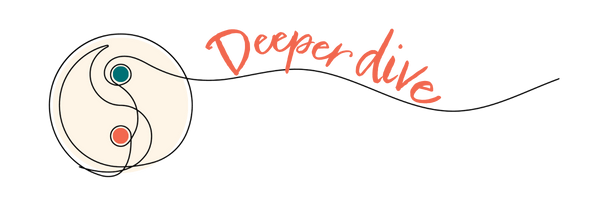What gets you stuck? Inspiration from a historic company that failed at innovating
Are you feeling anxious about how AI might reshape the world?
Are you feeling anxious about how AI might reshape the world?
Curious, yet resistant?
Leading a company that needs to explore, if not embrace, AI, but facing hesitation?
In this newsletter, we look to the past for insight into why embracing new technology can be so difficult (it's probably not what you think!)—and what we can do about it.

In the early 2000, I (Wendy) biked by the old Polaroid Headquarters at 748 Memorial Drive in Cambridge, Massachusetts on my way to my PhD office. The building is a symbol of innovation. Coolidge, Shepley, Bullfinch, and Abbott, the architectural firm famous for designing much of Harvard, built this landmark building in 1938 as the first modern industrial structure in Cambridge.1 The company is also a symbol of innovation. Long before Bill Gates and Mark Zuckerburg dropped out of Harvard to launch entrepreneurial ventures, there was Edwin Land.
In 1937, Land left chemical engineering at Harvard to invent light-polarizing filters. In the 1940's, a family vacation changed Land's life. While traveling, he snapped a photo. His young daughter wanted to see the picture immediately. Intrigued, Land invented an iconic instant camera that dominated the market.
Polaroid continued inventing over the years. Land’s comments in the 1980 annual report captures the company’s innovation obsession: “Do not undertake the program unless the goal is manifestly important and its achievement nearly impossible.”2
Yet by the time I was a doctoral student, the building was abandoned and the company had declared bankruptcy. I was curious about Polaroid’s downfall. According to academic research, they had done everything ‘right’ in adapting to new technology. So why did they fail?
Mary Tripsas, then a professor at Harvard Business School, studied Polaroid's decline, and her insights reveal lessons that feel particularly relevant today. Today, as AI invites us to adapt, individually and organizationally, Polaroid’s story helps us understand why some innovations succeed while others fall short.
What held Polaroid back, and what can we learn from their experience to move forward in this new era of AI?
As always, feel free to reach out, share your thoughts, and pass this along.
Are you grappling with the challenges of innovating? This month’s quick hit is a reminder that moving forward is a both/and - feeling grounded in the stability of the present can offer support that enables us to launch into the future.
This quick hit is from the stanza of Glenn Colquhoun’s poem “The Art of Walking Upright”, often quoted by Zita Cobb, CEO of Shorefast (see Chapter 10 of our book for more). Feel free to share this with others.
AI invites us to imagine a future very different from our present. Some embrace this challenge with excitement, while others feel anxious and skeptical. Will we move forward with AI, or remain stuck in the present?
So, what holds us back?
Sometimes it's simply the inability to see the future—change happens so fast we miss the signs. Other times, it's our unwillingness to invest in new skills, knowledge, or experiences.
For Polaroid, though, it was something deeper. Leaders in this company saw the change coming and invested heavily in digital technology. In the late 1980s, Polaroid leaders poured millions into a new R&D lab, hired digital experts, and created a separate unit for innovation. Despite these efforts, the company failed.
Why? I (Wendy) had the chance to catch up with Mary Tripsas. In our conversation, she shared, “Technologically, Polaroid was killing it. But they couldn’t align what they were developing with what senior leaders believed was a legitimate product.”
At the heart of the problem was Polaroid’s identity. Polaroid saw themselves as a company that made money on film, deeply tied to the "razor and blade" model—sell the camera cheap, make money on the film. So when they developed the Printer-In-Field to print digital photos, it flopped. The company's narrow self-concept was its downfall.
As Tripsas noted: “At the core of the Polaroid story is a deeply held belief of ‘who we are’. It starts with Edwin Land, and then it permeates the culture, routines, and procedures of being a company that produced film. As a result, they had a lot of trouble moving into areas that are not instant photography resulting in a print.”
This concept—what Tripsas and coauthor Giovanni Gavettie call “cognitive commitments”—shows how deeply-held beliefs about who we are and what we do can hold us back. So, what happens when AI challenges our roles, beliefs, and identities as individuals and leaders?
We’ve each been grappling with that question ourselves:
As writers and authors, what happens when AI can write for us?
As teachers, when AI explains the topics in my course, is it still teaching?
As scholars and academics, when AI can analyze complex data in seconds, what’s our role?
These challenges are real and unsettling. But the task isn’t to choose between the past and the future. It’s to find the both/and—to honor our core identities while embracing what’s next.
The consultants at RethinkX, a consulting firm seeking to understand disruptive technology, point out the predictability of this kind of uncertain change. As they noted, in the 13 years between 1900 and 1913, 5th avenue in New York went from having one automobile among all horses, to having one horse among all automobiles. The same, they argue, would be true of manufacturing factors. Today, there may be one or two robots among lots of humans. IN about 15 years, we might see one or two humans amid lots of robots.
If this change in evitable, how do we accept this shift? One option is to expand our identities. Tripsas compared Polaroid with Fuji.
FujiFilm took a different path than Polaroid by embracing a broader, more adaptable identity. While Polaroid clung to its roots in instant photography and the "razor and blade" model, Fuji shifted its identity, moving from a film company to a chemical company. This expanded identity allowed Fuji to pivot beyond traditional photography, diversifying into other industries like healthcare, cosmetics, and electronic materials—areas where their expertise in chemistry and imaging technologies were still relevant. By thinking more broadly about what they could offer, Fuji not only survived the digital revolution but thrived, transforming into a multi-industry leader.
An expanded identity can be the key to embracing AI with confidence. When we define ourselves not just by our current roles but by our core skills and values, we unlock new possibilities. Just as FujiFilm thrived by thinking beyond photography, we too can evolve by seeing ourselves not as limited by AI but empowered by it. Whether we are organizational leaders or writers, teachers, and scholars, AI can become a tool that enhances our work, not diminishes it—if we are willing to adapt. By broadening our sense of who we are, we can honor our past while fully stepping into the future.
Going forward, perhaps the key question to ask is how your identity is enabling your success, and how it is holding you back.
Here’s some additional resources if you want to learn more. If you have other favorites, please add them to the comments.
Capabilities, cognition, and inertia: Evidence from digital imaging. Tripsas, M. & Gavetti, G. (2000). Strategic management journal, 21(10-11), 1147-1161. (for an academic article that unpacks what happened at Polaroid)
Insisting on the Impossible: The Life of Edwin Land. McElheny, Victor K. (1998), Reading, MA: Perseus Books.
Kodak’s Downfall Wasn’t About Technology, Scott Anthony brilliantly offers us an insight into how another great photography company - Kodak - also got stuck during this technological transition.
https://shepleybulfinch.com/history/
Tripsas and Gavetti (2000)











